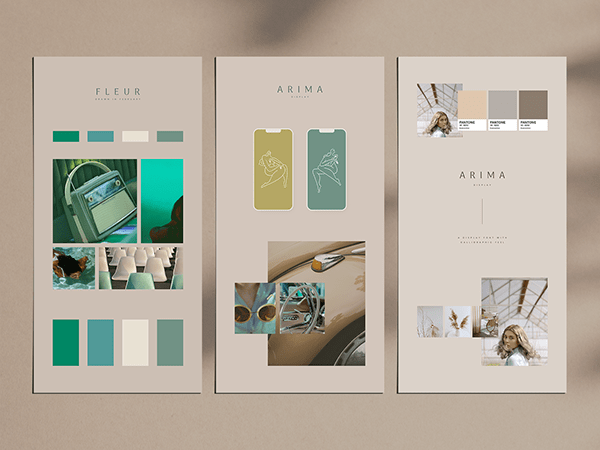Introduction
In the world of design, creating visually appealing and cohesive projects is crucial to convey messages, evoke emotions, and captivate audiences. One powerful tool that designers and artists frequently use to kickstart their creative process is the moodboard. A moodboard is a collage of images, colors, textures, and other design elements thoughtfully curated to inspire, guide, and establish a specific mood or theme for a project. This article delves into the concept and significance of moodboards in the creative realm.
Understanding the Moodboard
A moodboard is akin to a visual brainstorming session, serving as a canvas where designers can gather and arrange various visual elements, ideas, and concepts. It is not just a random collection of images but rather a well-organized compilation with a clear purpose. The purpose is to communicate a particular feeling, atmosphere, or brand identity. By blending diverse images, textures, fonts, and colors, a moodboard can set the tone for a design project and offer a preview of what the end product may look and feel like.

The Elements of a Moodboard
- Images: Images are the backbone of a moodboard, as they convey the core of the intended message or mood. These can be photographs, illustrations, or even screenshots from websites and magazines. They should be selected carefully, as each image contributes to the overall narrative and aesthetic.
- Colors: The color palette of a moodboard plays a vital role in evoking emotions and establishing a consistent visual identity. Designers choose colors that harmonize with the desired mood and project objectives. A well-chosen color scheme can elicit a sense of calm, excitement, or nostalgia, depending on the project’s goals.
- Textures and Patterns: Integrating textures and patterns into a moodboard enhances the visual appeal and adds depth to the design. These elements can help create a sense of touch and enrich the overall visual experience.
- Fonts and Typography: The choice of fonts can significantly impact the mood and personality of a project. Whether it’s bold and modern or elegant and classic, typography must align with the project’s concept and visual narrative.

The Significance of Moodboards
- Idea Generation: Moodboards stimulate creativity and idea generation. They act as a catalyst for designers, sparking fresh concepts and approaches that might not have emerged otherwise.
- Clear Communication: When collaborating on a project, sharing a moodboard with team members or clients helps ensure everyone involved is on the same page regarding the envisioned style and atmosphere.
- Focus and Direction: Moodboards provide a clear direction, preventing designers from straying away from the intended theme or mood during the design process.
- Problem Solving: Moodboards assist designers in identifying potential design issues early on, enabling them to address and resolve problems proactively.
- Client Presentations: Presenting a moodboard to clients can help them visualize the design concept, leading to better feedback and smoother project development.

Creating a Moodboard
- Define the Objective: Start by clearly defining the purpose of the moodboard and the emotions or message you want to convey.
- Gather Inspiration: Collect images, colors, textures, and fonts from various sources, such as magazines, websites, and design platforms.
- Organize and Arrange: Arrange the elements thoughtfully on a digital or physical canvas, ensuring a coherent and harmonious composition.
- Edit and Refine: Continuously review and refine the moodboard until it accurately captures the intended mood and concept.
Conclusion
Moodboards are invaluable tools for designers and artists seeking to channel their creativity into cohesive and captivating projects. By merging images, colors, textures, and typography, these visual collages inspire, guide, and set the stage for the design process. Whether used for graphic design, interior decoration, or marketing campaigns, moodboards prove their worth by bringing focus, clarity, and direction to the creative journey. So, the next time you embark on a design project, start with a moodboard and let your imagination take flight.



